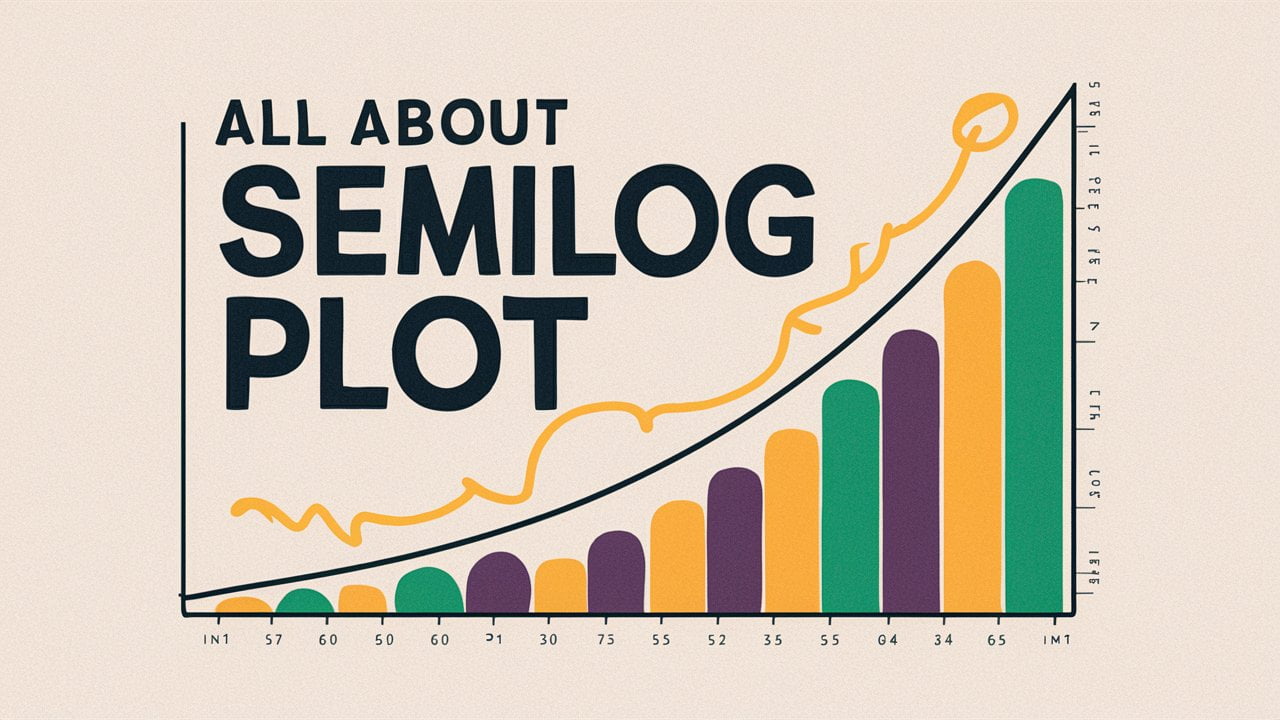In the world of mathematics, where precision meets complexity, tools like semi-log plot play a pivotal role in unraveling patterns hidden within data. As we move along this journey of semi-logarithmic plots, it’s essential to understand their significance in everything about AP Precalculus, and how they differ from other logarithmic representations.
What is a Semi-Log Plot?
A semi-log plot, short for semi-logarithmic plot, is a unique graphical representation that combines linear and logarithmic scales on its axes. In this plot, one axis typically employs a linear scale, while the other employs a logarithmic scale. This hybrid structure is particularly useful when dealing with data that spans several orders of magnitude, such as exponential growth or decay.
Distinguishing Semi-Log from Log-Log Plots:
Semi-log plots are an important part of Unit 2 of AP Precalculus. While semi-log plots use a combination of linear and logarithmic scales, log-log plots utilize logarithmic scales for both axes. The key distinction lies in the type of relationship being visualized. Semi-log plots are ideal for situations where one variable is exponentially related to the other, transforming exponential curves into straight lines. On the other hand, log-log plots are suitable for power-law relationships, where both variables exhibit a power-law dependence.
Advantages of Semi-Logarithmic Plots:
- Clarity in Exponential Trends: Semi-log plots simplify the representation of exponential relationships, making it easier to identify trends and patterns in data that may span several orders of magnitude.
- Linearization of Exponential Data: By using a logarithmic scale for one axis, semi-log plots convert exponential data into linear form, facilitating easier interpretation and analysis.
- Application Flexibility: Semi-logarithmic plots find applications in diverse fields, including biology, physics, economics, and engineering, where phenomena exhibit exponential behavior.
In the upcoming sections, we’ll delve into the mechanics of generating semi-log plots, deciphering their components, and mastering the art of interpreting these visualizations in the context of AP Precalculus. So, buckle up as we navigate the terrain of semi-logarithmic plots, unlocking their potential as powerful tools for mathematical exploration and problem-solving.
Imagine you are given a set of data representing the population growth of a certain bacterial colony over time. The data is as follows:
| Time (hours) | Population |
|---|---|
| 0 | 10 |
| 1 | 100 |
| 2 | 1000 |
| 3 | 10000 |
| 4 | 100000 |
You are tasked with creating a semi-log plot and answering specific questions about the bacterial population’s growth.
Step 1: Understanding the Data
Before diving into the semi-log plot, it’s crucial to understand the data. In this case, the population seems to be increasing exponentially over time. The values are growing by a factor of 10 with each passing hour.
Step 2: Generating the Semi-Log Plot
- Logarithmic Transformation: Start by taking the logarithm (base 10) of the population values. The table becomes:
Time (hours) Log(Population) 0 1 1 2 2 3 3 4 4 5 - Plotting the Semi-Log Graph: On graph paper, plot Time on the linear scale (x-axis) and Log(Population) on the logarithmic scale (y-axis). Connect the points with a smooth curve. The resulting graph will showcase the exponential growth more clearly.
Step 3: Interpreting the Semi-Log Plot
Now that you have the semi-log plot, you can answer questions about the bacterial population more effectively.
- Rate of Growth: The slope of the line on a semi-log plot corresponds to the exponential growth rate. In this case, the slope is consistently 1, indicating that the population is increasing tenfold with each hour.
- Extrapolation: Using the semi-log plot, you can predict the population at any given time. Extrapolate the curve to estimate the population after, for example, 5 hours.
Step 4: Converting Semi-Log to Linear (if needed)
If the question requires converting the semi-log plot back to linear form, you can use the anti-logarithm (base 10) of the Log(Population) values to obtain the original population values.
How to convert semi-log to exponential graph?
Why Choose Tutoring Maphy for AP Precalculus Preparation?
At Tutoring Maphy, we understand the challenges that students face in mastering intricate topics like semi-logarithmic plots in AP Precalculus. That’s why we’ve curated a specialized platform designed to enhance your understanding and proficiency in AP Precalculus concepts.
- Expert AP Precalculus Tutors: Our team comprises experienced AP Precalculus tutors who are well-versed in the intricacies of the College Board’s curriculum. Benefit from personalized guidance tailored to your learning style, ensuring a comprehensive understanding of topics like semi-logarithmic plots.
- Interactive Learning Resources: Access a wealth of interactive learning resources, including video tutorials, practice problems, and real-world applications. Our platform is designed to make complex concepts like semi-logarithmic plots accessible and engaging.
- Live Sessions for Clarifications: Attend live tutoring sessions for real-time clarifications on challenging topics. Our AP Precalculus tutors are dedicated to addressing your queries and providing in-depth explanations, fostering a deeper understanding of key concepts.
- Targeted Exam Preparation: Prepare confidently for the AP Precalculus exam with our targeted resources and practice exams. Our platform is structured to align with the College Board’s curriculum, ensuring that you are well-prepared for success on exam day.
- Dedicated AP Precalculus Learning Paths: Navigate your AP Precalculus journey with structured learning paths that guide you through each topic, including detailed explanations and step-by-step solutions for semi-logarithmic plots and other advanced concepts.
Connect with your Ideal AP Precalculus Tutor Today!
Whether you’re struggling with semi-logarithmic plots or seeking comprehensive AP Precalculus preparation, Tutoring Maphy is your go-to destination. Book a Free demo now! Our dedicated AP Precalculus tutors are ready to help you navigate the intricacies of the course, ensuring that you not only grasp challenging topics but also excel in your academic endeavors.



